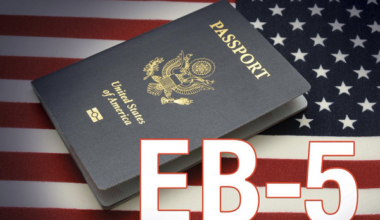In today’s interconnected world, the United States has emerged as a beacon of opportunity for countless individuals seeking to broaden their horizons and advance their careers on a global stage. The allure of the American Dream, with its promise of personal and professional growth, has consistently attracted talent from all corners of the globe.
U.S. jobs with visa sponsorship represent a gateway to the American experience, offering a pathway for skilled and motivated individuals to contribute to the nation’s dynamic economy and diverse culture.
For prospective employees, the prospect of securing a U.S. job with visa sponsorship represents the realization of their American dream. It offers them the chance to build a promising future in the land of opportunity, gain invaluable work experience, and contribute to the socio-economic fabric of the nation. Additionally, visa sponsorship often opens doors to permanent residency and even U.S. citizenship for those who wish to make America their home.
In this post, we will delve into the key aspects of U.S. jobs with visa sponsorship. It will provide insights into the different types of work visas available, the industries that frequently sponsor foreign talent, and the obligations and benefits that both employers and employees must consider.
So let’s proceed…
Types of U.S Visa Sponsorship
In the United States, there are several types of visas that can be sponsored by individuals, employers, or organizations for foreign nationals to enter and stay in the country legally. These visas serve various purposes, including employment, family reunification, education, and more. Here are some common types of U.S. visa sponsorship:
1. Family-sponsored Visas:
- Immediate Relative Family Sponsorship (IR): For U.S. citizens to sponsor their immediate relatives, such as spouses, parents, and unmarried children under 21, for permanent residency (green card).
- Family Preference Visas (F): For U.S. citizens and lawful permanent residents (LPRs) to sponsor other family members, including unmarried adult children, married children, and siblings.
2. Employment-based Visas:
- H-1B Visa: Sponsored by U.S. employers for foreign professionals with specialized skills or knowledge.
- L-1 Visa: For intracompany transferees who work for multinational companies and are transferred to a U.S. office.
- O Visa: For individuals with extraordinary ability or achievement in fields like arts, sciences, sports, or business.
- EB-1, EB-2, EB-3 Visa: Employment-based preference categories for workers with different skill levels and qualifications.
3. Student Visas:
- F-1 Visa: For foreign students attending academic programs in the U.S.
- J-1 Visa: For exchange visitors participating in approved exchange programs.
4. Investor and Business Visas:
- E-2 Visa: For investors from certain treaty countries who invest a substantial amount of capital in a U.S. business.
- EB-5 Visa: For immigrant investors who invest a significant amount of capital and create jobs in the U.S.
5. Diversity Visa (DV) Lottery:
A limited number of visas are available through an annual lottery program that aims to diversify the immigrant population in the U.S.
6. Refugee and Asylum Visas:
- Asylum: For individuals who fear persecution in their home countries.
- Refugee: For individuals who are unable or unwilling to return to their home countries due to persecution or a well-founded fear of persecution.
- Specialty Visas:
There are various other specialized visas, including U visas for crime victims, T visas for victims of human trafficking, and more.
8. Visitor Visas:
- B-1 Visa: For business visitors.
- B-2 Visa: For tourists and visitors.
9. Diplomatic and Official Visas:
These visas are issued to foreign diplomats, government officials, and representatives of international organizations.
10. Exchange Visitor Visas:
- J-1 Visa: For participants in approved exchange programs, including students, scholars, and professionals.
Visas To Apply For To Get U.S. Jobs With Visa Sponsorship
If you are seeking to work in the United States and need a visa with sponsorship from an employer, there are several visa options available, each with its own eligibility requirements and limitations.
Here are some of the most common employment-based visas you can consider:
1. H-1B Visa:
The H-1B visa is for skilled workers in specialty occupations. To be eligible, you generally need a job offer from a U.S. employer and a bachelor’s degree or higher in a relevant field. H-1B visas are subject to an annual cap, and the application process can be highly competitive.
2. L-1 Visa:
The L-1 visa is for intracompany transferees. It’s suitable for employees of multinational companies who are being transferred to a U.S. office. There are two types: L-1A for managers and executives, and L-1B for employees with specialized knowledge.
3. O-1 Visa:
The O-1 visa is for individuals with extraordinary abilities or achievements in their field, including arts, sciences, business, education, and athletics. It typically requires substantial evidence of your exceptional skills.
4. TN Visa:
The TN visa is available to citizens of Canada and Mexico under the North American Free Trade Agreement (NAFTA). It’s for professionals working in certain designated professions.
5. E-3 Visa:
The E-3 visa is specifically for Australian nationals seeking to work in specialty occupations in the U.S. It’s similar to the H-1B visa in many respects.
6. H-2B Visa:
The H-2B visa is for temporary non-agricultural workers. It’s typically used for seasonal or peak-load work when U.S. workers are not available.
7. J-1 Visa:
The J-1 visa is for exchange visitors and can be used for employment in certain cases, such as internships or research programs. However, it’s primarily designed for cultural exchange.
8. EB-1, EB-2, and EB-3 Visas:
These are employment-based immigrant visas, also known as green cards. They are for individuals seeking permanent residency in the U.S. based on their skills, qualifications, and job offers.
9. H-4, L-2, E-2, etc. (Dependent Visas):
If you are the spouse or dependent child of someone holding one of the above visas, you may be eligible for a dependent visa that allows you to live and study in the U.S.
Requirements and Eligibility Criteria for U.S. Jobs with Visa Sponsorship
Visa sponsorship requirements and eligibility criteria can vary significantly depending on the country and the type of visa you are seeking.
Here, we will provide a general overview of common elements involved in visa sponsorship in many countries, such as the United States. Keep in mind that specific requirements may differ, so it’s essential to consult the official government website of the country you’re interested in for precise and up-to-date information.
1. Employer Sponsorship:
Most work visas require an employer in the destination country to sponsor you.
The employer must typically demonstrate that they cannot find a suitable local candidate for the job and that your skills and qualifications are necessary for the position.
2. Job Offer:
You need a job offer or employment contract from the sponsoring employer.
The job offer should include details such as your role, salary, and terms of employment.
3. Visa Category:
Different countries have various visa categories for different purposes, such as work, study, family reunification, or tourism.
You must determine which visa category aligns with your intentions and eligibility.
4. Education and Experience:
Some work visas may require specific educational qualifications or work experience.
You may need to provide evidence of your qualifications and experience, such as degrees, certificates, or employment history.
5. Background Checks:
You may be subject to background checks, including criminal record checks, to ensure you meet the eligibility criteria.
6. Health and Medical Requirements:
Some visas may require you to undergo a medical examination to ensure you do not have contagious diseases or health conditions that could pose a public health risk.
7. Financial Requirements:
You may need to prove that you have sufficient funds to support yourself and any dependents during your stay in the destination country.
8. Language Proficiency:
For some visas, especially if you are not a native English speaker, you may need to demonstrate your proficiency in the language spoken in the destination country.
9. Documentation:
You will need to provide a range of documents, including passport, visa application forms, photographs, and any specific documents required for your visa category.
10. Application Fees:
Visa applications often require payment of fees, which can vary in amount depending on the type of visa and the country.
11. Interviews and Biometrics:
Depending on the country and visa type, you may be required to attend an interview at the embassy or consulate and provide biometric data like fingerprints and photographs.
12. Compliance with Visa Regulations:
Once you obtain a visa, you must comply with the regulations and conditions associated with that visa, such as not working in unauthorized jobs or overstaying your visa’s validity.
How To Apply for U.S. Jobs With Full Visa Sponsorship
Applying for U.S. jobs with full visa sponsorship can be a complex process, but it’s definitely possible if you meet the qualifications and follow the right steps. Here’s a step-by-step guide to help you navigate this process:
1. Determine Your Eligibility:
Before you start your job search, ensure you’re eligible for a U.S. work visa. The most common work visas include H-1B, L-1, O-1, and TN visas, among others. Your eligibility will depend on factors such as your education, work experience, and the type of job you’re seeking.
2. Identify Prospective Employers:
Look for U.S. companies that are open to hiring foreign talent and willing to sponsor visas. Larger multinational corporations are more likely to have experience with this process.
3. Create or Update Your Resume:
Tailor your resume to the U.S. job market and highlight your skills and qualifications that are relevant to the job you’re applying for.
4. Job Search:
Start searching for job openings that explicitly mention visa sponsorship. You can use job search websites like LinkedIn, Indeed, Glassdoor, and company websites. Networking can also be valuable; attend job fairs, industry events, and connect with professionals in your field.
5. Apply for Jobs:
Follow the application instructions provided in the job postings. Submit your resume and any other required documents.
6. Prepare for Interviews:
If you’re selected for an interview, be prepared to discuss your qualifications, visa requirements, and your willingness to relocate to the U.S. Some companies may conduct video interviews, while others may request an in-person interview.
7. Understand Visa Sponsorship Costs:
Be aware that visa sponsorship can be expensive for employers. Some companies may not offer sponsorship due to the costs and administrative burdens involved.
8. Negotiate Terms:
Once you receive a job offer, discuss visa sponsorship with the employer. Understand the terms and conditions of sponsorship, including who will be responsible for the costs associated with the visa application process.
9. Gather Required Documents:
If the employer agrees to sponsor you, you’ll need to provide the necessary documents for the visa application. This may include your educational certificates, employment letters, and other supporting materials.
10. Visa Application Process:
Depending on the type of visa, you or your employer will need to file the appropriate visa petition with U.S. Citizenship and Immigration Services (USCIS). This process can take several months, so start early.
11. Wait for Visa Approval:
After submitting the visa petition, you’ll need to wait for USCIS to process your application. Be prepared for potential delays and follow up on the status of your application if necessary.
12. Travel and Relocation:
Once your visa is approved, make arrangements for your travel and relocation to the U.S. Ensure you have all the necessary documents, such as your visa stamp, passport, and any additional paperwork required.
13. Maintain Legal Status:
After arriving in the U.S., ensure you follow all visa regulations and maintain your legal status. This includes abiding by the terms of your visa and potentially applying for extensions if needed.






